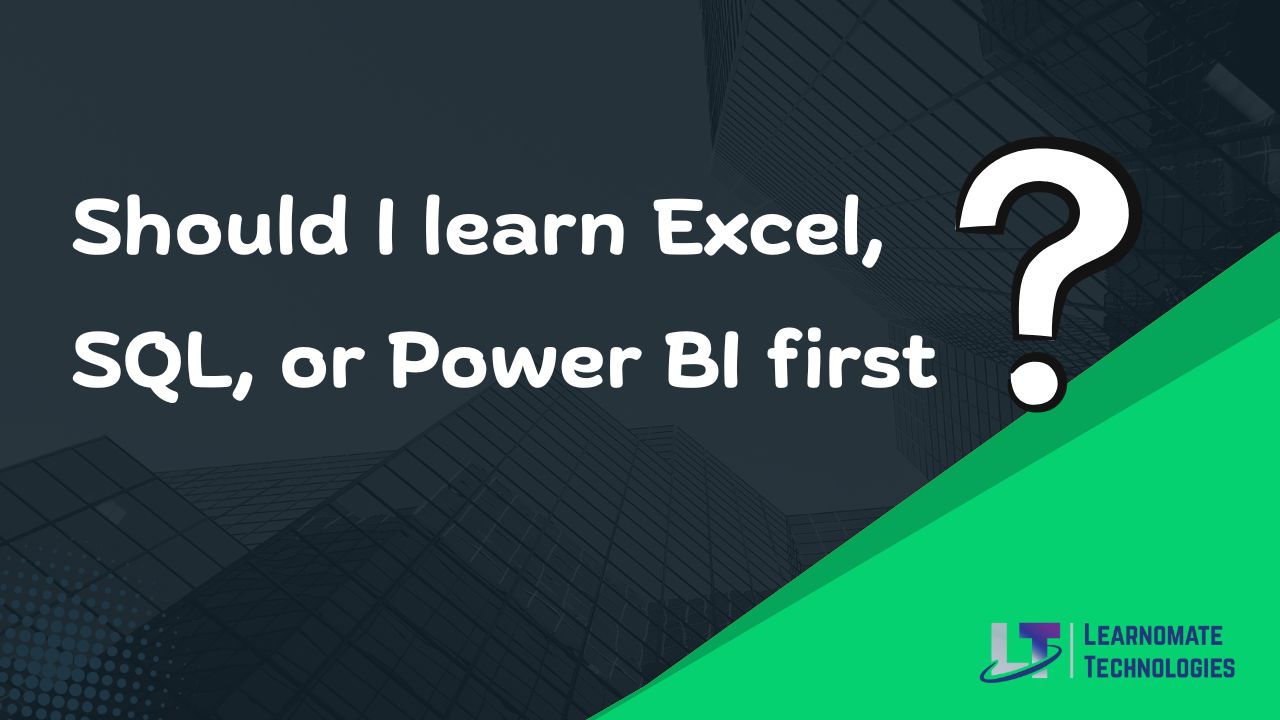Should I learn Excel, SQL, or Power BI first?
Introduction
What Does a Data Analyst Actually Do?
Ever wondered what a Data Analyst really does every day?
It’s more than just crunching numbers — it’s about finding meaningful insights that drive smart business decisions.
From cleaning messy data to visualizing trends in Power BI, a data analyst connects data → decisions → growth.
💡 If you love solving problems and telling stories with data, this could be your dream career.
#DataAnalyst #DataAnalytics #CareerInData
Top 5 Skills Every Data Analyst Must Master
Want to become a successful Data Analyst in 2025? Focus on these core skills 👇
✅ SQL – to extract and manage data
✅ Excel – for quick analysis
✅ Power BI / Tableau – for visual storytelling
✅ Python – for automation and deeper analysis
✅ Communication – to explain insights clearly
Becoming a great Data Analyst isn’t about tools — it’s about curiosity, logic, and storytelling.
If you’re starting your journey as a data analyst, one of the most common questions is —
👉 “Should I learn Excel, SQL, or Power BI first?”
Each tool plays a unique role in the data analytics ecosystem, and mastering the right one first can save you time, boost your skills, and make you more job-ready.
Let’s break down how these tools differ, what they’re best for, and how to plan your learning path.
1️⃣ Excel – The Foundation of Data Analysis
Best For: Beginners, quick analysis, small datasets
Excel is often the first tool every data analyst learns — and for good reason.
It’s simple, visual, and powerful for data entry, calculations, and charting.
✅ Why Learn Excel First?
-
Ideal for learning the basics of data analysis
-
Helps you understand data structures, functions, and pivot tables
-
Offers built-in visualization tools like charts and conditional formatting
-
Perfect for business reporting and ad-hoc analysis
Limitations:
-
Struggles with large datasets
-
Limited automation
-
Not suitable for handling millions of rows efficiently
Verdict:
Start with Excel to build your analytical thinking and get hands-on with real data.
2️⃣ SQL – The Language of Data
Best For: Querying, filtering, and managing large databases
SQL (Structured Query Language) is the backbone of data analytics.
While Excel helps you analyze, SQL helps you access and prepare the data you’ll analyze.
✅ Why Learn SQL Next?
-
Allows you to work directly with databases (MySQL, PostgreSQL, Oracle, etc.)
-
Essential for data extraction, transformation, and loading (ETL)
-
Used by 90%+ of data roles in analytics and engineering
-
Helps you automate repetitive tasks with clean, reusable queries
Limitations:
-
Not built for visualization
-
Requires understanding of database concepts
Verdict:
Once you’re comfortable analyzing data in Excel, move to SQL to access and manipulate large datasets like a pro.
3️⃣ Power BI – Turning Data into Insights
Best For: Visualization, dashboards, and reporting
Power BI is where your data comes to life.
It connects to multiple data sources (Excel, SQL, APIs) and turns numbers into interactive visuals.
✅ Why Learn Power BI:
-
Drag-and-drop dashboard creation
-
Connects easily to Excel and SQL
-
Real-time reporting and sharing via Power BI Service
-
Widely used in business intelligence and analytics roles
Limitations:
-
Requires data preparation before visualization
-
Complex DAX formulas can be tricky for beginners
Verdict:
Power BI is the final step — once you can clean and query data (Excel + SQL), Power BI helps you communicate insights effectively.
The Ideal Learning Path for Data Analysts
Here’s the recommended roadmap 👇
1️⃣ Start with Excel – Learn basic analysis, formulas, and visualization.
2️⃣ Move to SQL – Query and transform data efficiently.
3️⃣ Finish with Power BI – Create professional dashboards and reports.
This path builds a strong foundation and makes you confident with the full data analytics lifecycle — from data collection to storytelling.
Conclusion
There’s no one-size-fits-all answer — it depends on your goals.
But for most data analysts, the best sequence is:
Excel → SQL → Power BI
Each tool complements the other, helping you go from raw data → cleaned data → powerful insights.
At Learnomate Technologies, we help aspiring data analysts and engineers master these tools through practical, project-based learning — so you can build real-world skills, not just theory.
At Learnomate Technologies, we make sure you not only understand such cutting-edge features but also know how to implement them in real-world projects. Whether you’re a beginner looking to break into the database world or an experienced professional upgrading your skillset—we’ve got your back with the most practical, hands-on training in Oracle technologies.








Let’s keep learning, exploring, and growing together. Because staying curious is the first step to staying ahead.
Happy learning!
ANKUSH


